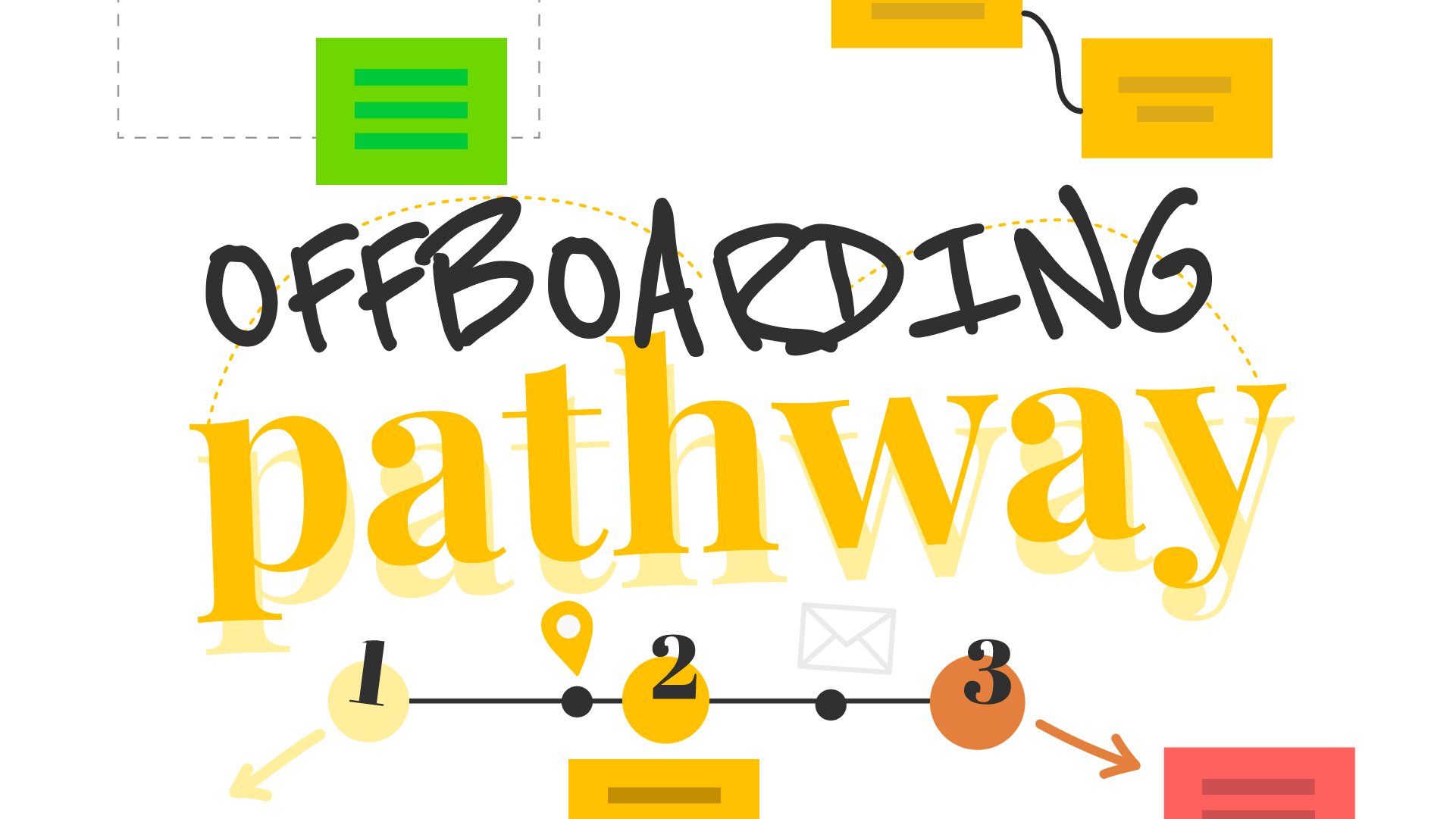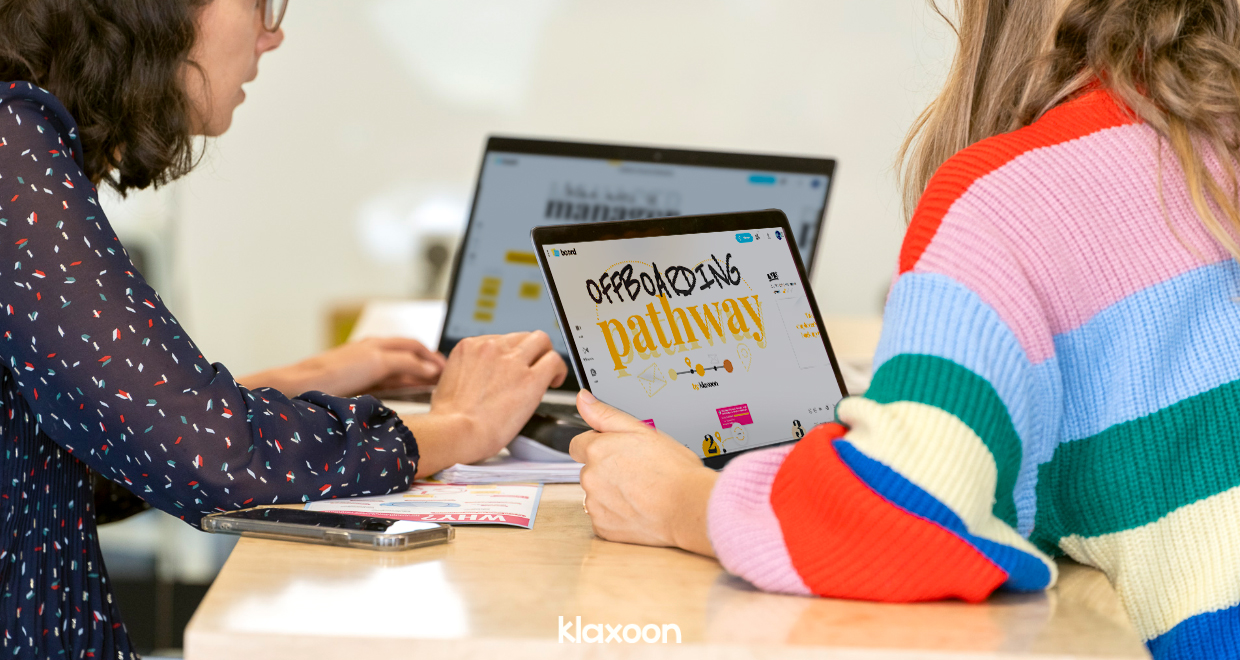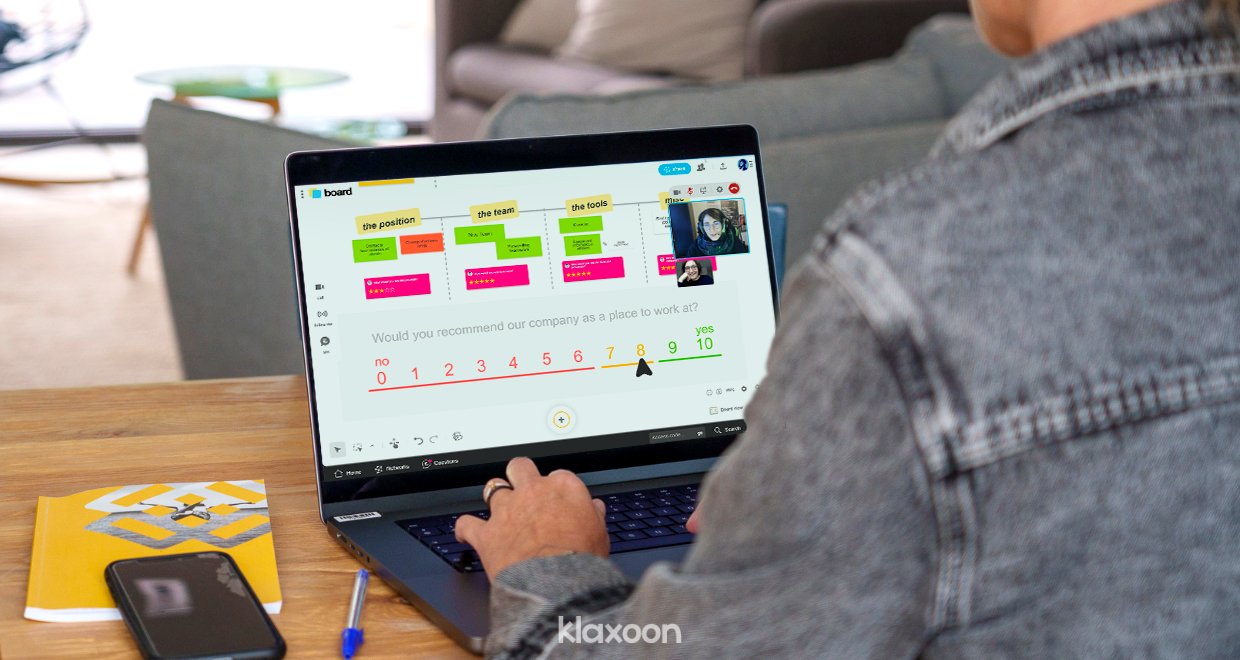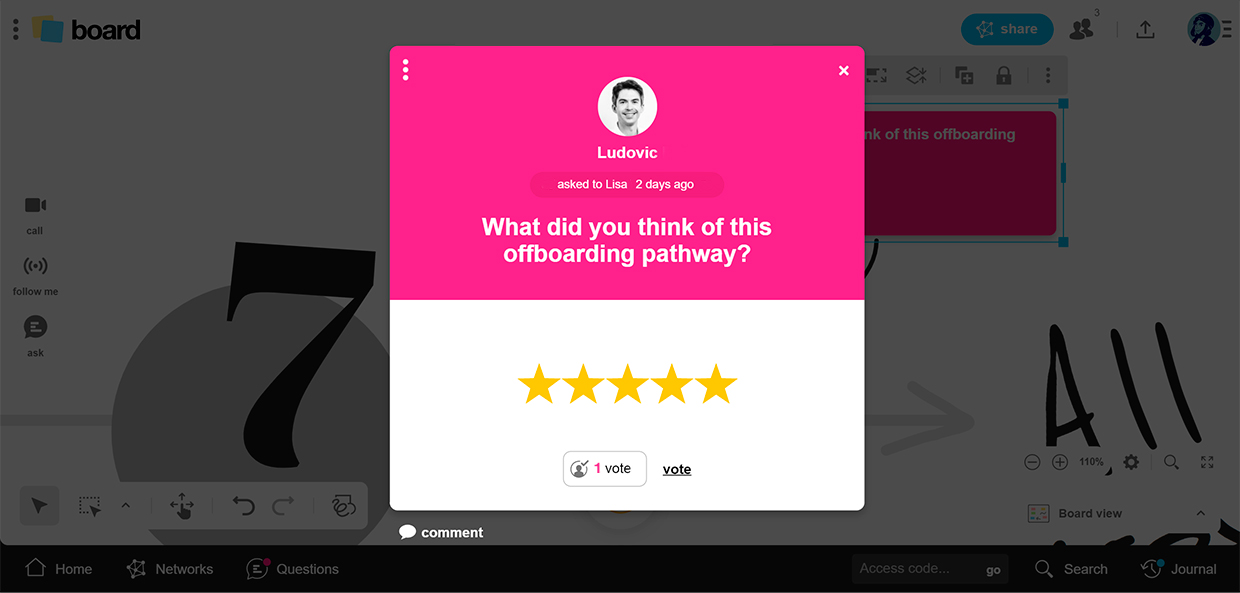Offboarding process: how to ensure a smooth employee departure
Published on February 14, 2025
Offboarding process: how to ensure a smooth employee departure


The mirror image of onboarding, offboarding is when you need to support an employee who is leaving. Often overlooked, it nevertheless has certain merits, such as playing a key role in your employer brand, both externally and internally. With this offboarding process template, make sure your employees leave on good terms by recognizing their work and making the most of their notice period.
"Tell me please how to say goodbye" Françoise Hardy was right back in 1968. Like any relationship that comes to an end, the collaboration between an employee and their employer deserves a happy one.
And while onboarding, or the art of welcoming new employees, is now commonplace in most companies, why should we neglect its counterpart, the offboarding, when they leave? This period of support, during the notice period, involves several steps that must be followed to leave each other on good terms. This is all the more important since the era when people were joining a company after graduation, and leaving it when retiring, is long gone. Here's the proof: a report by the French Senate, published in September 2022, states that on average, people would change jobs between 5 and 13 times during their career. That's quite a lot of offboarding processes. Even today, an employee leaving is associated with something negative, while the figures prove that it is simply a normal and logical step in an employee’s and a company’s lives.


The offboarding process: a way to end a professional relationship positively for both the company and the leaving person.
It would be easy enough to say: people leave companies every day, sometimes it’s unfortunate, but after all, that’s life. Why should you care about leavers? Isn’t it better to look after the others, new hires and people who are staying put?
First, because nothing prevents a company from doing both. And second, because life does not stop at the doors of your company. Messing up their departure can be very painful, both for the employee and for the company. While unsuccessful onboarding can cause new employees to be demotivated and disengaged from the outset, unsuccessful offboarding will have consequences for the entire company in the long term. Here is what can potentially happen:
The importance of good offboarding lies above all in the aftermath. An angry employee is an employee who can quickly destroy a company’s reputation. Interviewed by Hellowork on this matter, Jenny Gaultier, founder of Le Mercato de l’Emploi, sums this up simply: "In the end, it’s the way in which their departure was handled that employees will remember!"
The aim is to be able to make the leaver a future ambassador of the company, to convey a positive image and contribute to the employer brand. Moreover, companies that find it difficult to recruit most often suffer from a bad image, conveyed by former employees. By implementing the offboarding process designed by Klaxoon, employees have the opportunity to express their views about the job, the team, the tools, the company etc. This feedback enables you to identify problems that can motivate departures and solve them.


Klaxoon’s offboarding process enables you to collect valuable feedback from an employee about their departure.
On top of that, implementing a tailor-made offboarding process encourages boomerang recruitment, i.e. rehiring a former employee. A real advantage to overcome the shortage of candidates and save time during the recruitment phase.
For employees who remain with the company, good offboarding can also have a very positive effect. It can improve engagement, commitment to the company and above all confidence in the management.
Klaxoon's Board or digital whiteboard is a powerful visual communication tool that allows you to share ideas in the form of colored thumbnails and all types of documents. With the integrated videoconferencing system, you can even bring together several people remotely during any stage of the offboarding process that requires it. By following the various steps of this ready-to-use template, based on both synchronous and asynchronous work, you will be able to get feedback from the employee, for better fueling continuous improvement.
This is an opportunity for the employee to take stock of their experience with their human resources contact, and then with their manager. On the Board, the employee can share their impressions of the company and their manager, using the following color code:
This way, you get valuable feedback about their view of the job, the team, the tools and how likely they will be to recommend the company. These are useful comments to improve certain aspects within the company. In addition to shared ideas, Rating Questions can be used to measure their satisfaction, from 1 to 5 stars.


The employee gives a 1 to 5 star rating for the company, via a Rating Question.
Similarly, in a spirit of constructive feedback and recognition, share your impression of the employee: the qualities and skills you have appreciated, their areas of improvement, their remarkable achievements.
This is when you think about what information to convey to keep the business running without any loss of productivity or efficiency. There are two options:
Communication at this stage is vital internally and, depending on the employee's job, externally. The leaver and the management must agree on how to announce it to the teams, to be prepared for any outcome.
These are all the administrative formalities required to complete the exit process: reimbursing expenses, returning equipment, paying account balances and issuing the employment certificate.
If you wish, prepare a letter of recommendation or confirm the employee's skills and professionalism on their LinkedIn profile.
Finally, it is useful to keep in touch after the departure, via professional social networks. For example, by congratulating former colleagues when they get a job, or simply checking up on them regularly. In the long term, this could lead to interesting business opportunities.
After the person leaves, it’s also a good idea to take the team’s pulse to ensure that they have come to terms with the situation and that they are feeling positive after what has happened.
And then who knows, the leaver might even come back again?
According to a study conducted by Hays, in almost 70% of cases, employees would be inclined to return to a company they have quit, if they were happy with the support they received when they left. Another good reason to look after your leavers.
Get inspired by other templates from the same categories
Unlock your teamwork potential